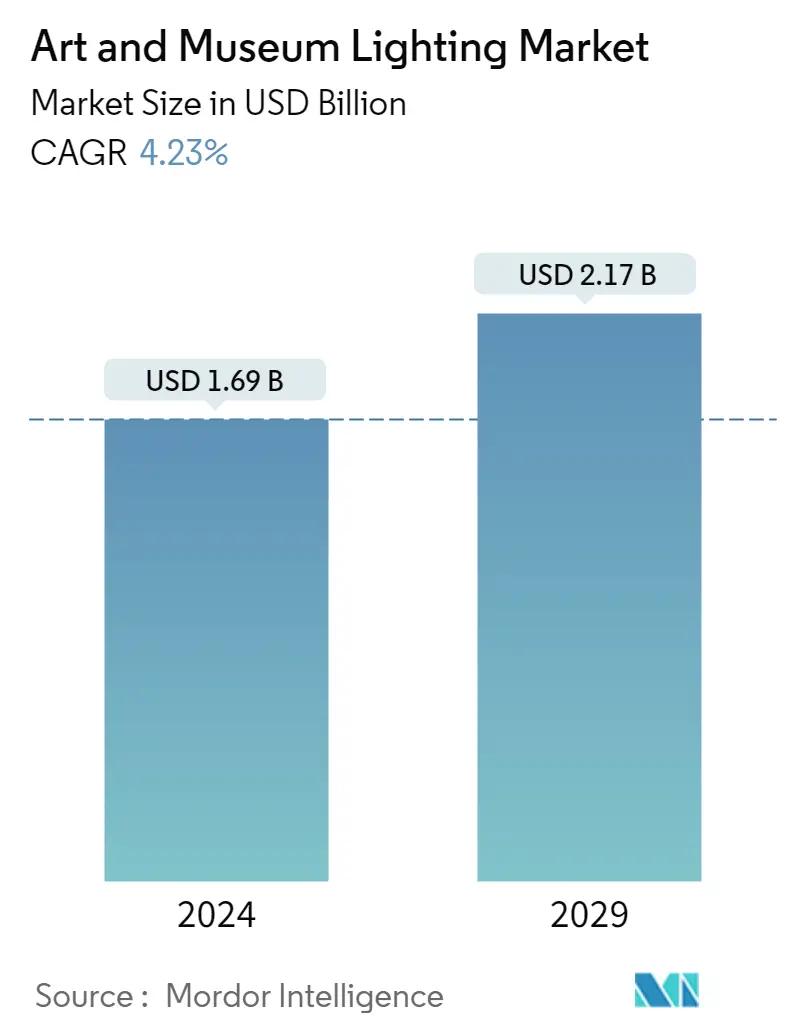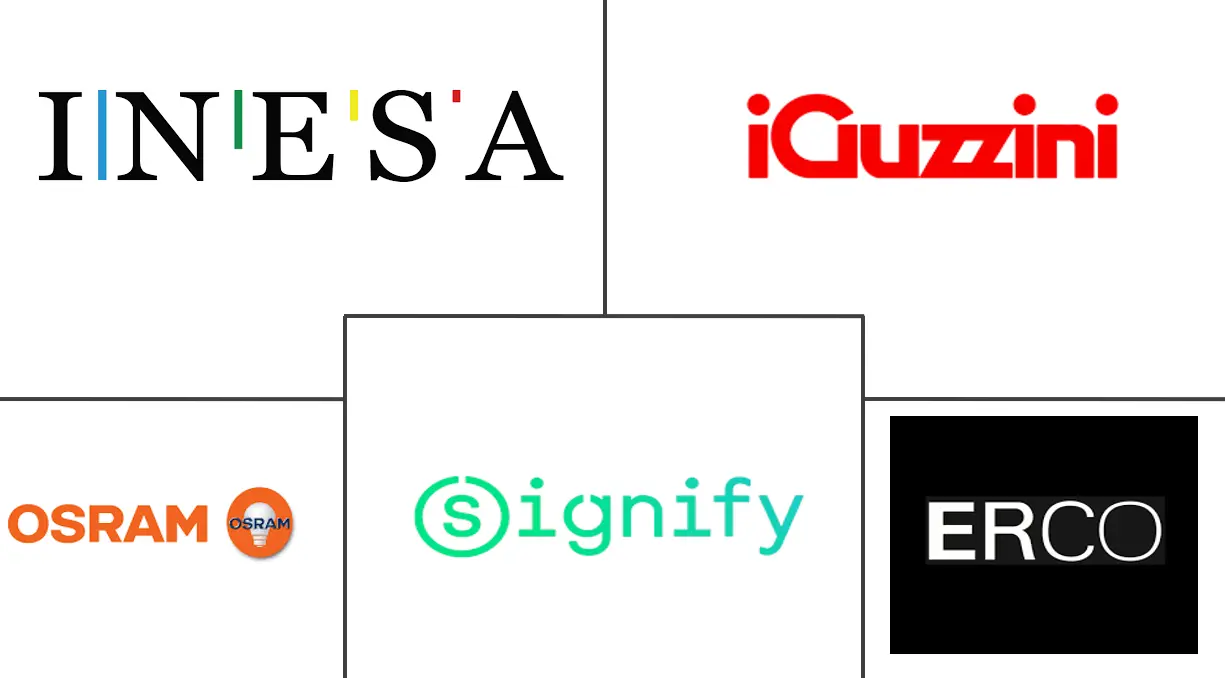Market Size of Art & Museum Lighting Industry

| Study Period | 2019 - 2029 |
| Market Size (2024) | USD 1.69 Billion |
| Market Size (2029) | USD 2.17 Billion |
| CAGR (2024 - 2029) | 4.23 % |
| Fastest Growing Market | Europe |
| Largest Market | North America |
Major Players
*Disclaimer: Major Players sorted in no particular order |
Need a report that reflects how COVID-19 has impacted this market and its growth?
Art and Museum Lighting Market Analysis
The Art & Museum Lighting Market size is estimated at USD 1.69 billion in 2024, and is expected to reach USD 2.17 billion by 2029, growing at a CAGR of 4.23% during the forecast period (2024-2029).
In museum lighting design, the ambient, task, focal, and decorative are all layers that contribute to the overall aesthetic of a space. Ambient layering is the general lighting of a room. This type of lighting allows one to move through space and is significantly lower than task light levels. The growing urban population across the globe has heightened concerns about the secure, reliable supply of affordable energy, environmental impacts such as greenhouse gas emissions, climate change, and loss of biodiversity, which in turn has driven the adoption of efficient sources of lighting in residential as well as in commercial buildings in cities, which is further propelling the studied market growth.
- The increasing investment to refurbish or upgrade the electric lighting systems within museums and art galleries to attain significant cost savings, both in terms of energy reduction and reducing ongoing maintenance costs and growing demand for electing lighting systems with a smart control system that can respond to occupancy or user preference are the major factors driving the growth of the art & museum lighting market.
- Museums and galleries consume significant energy to maintain an internal environment to protect and preserve their collections. As per the Arup report, lighting within both exhibitions and back-of-house areas can account for 20% of the energy consumption, and to reduce the cost, most museums are using efficient luminaires.
- Furthermore, the light cast by LED lamps contains very few infrared rays and almost no ultraviolet rays, which is another advantage of using LED lamps for the museum's lighting system. The fragile artwork no longer requires filters to preserve it from damaging infrared or ultraviolet beams, which enhances the visitor's visual experience.
- Also, a survey conducted at the Manchester Museum revealed that 50% of the total cost of energy consumption was attributable to the museum's lighting system. When the museum decided to replace its fluorescent tubes with LED lamps and affix motion sensors to the luminaires throughout its establishment, it reduced its consumption by around 89%.
- Moreover, the museums and art galleries' most significant challenge is to balance the energy savings and lighting quality of the displays as expected by the artist. Most of the time, the lure of substantial energy savings can sometimes lead to compromised lighting quality. Hence, most market vendors provide comprehensive lighting design services, from initial strategic advice and concept development to construction documents and on-site support.
- Additionally, the Russia-Ukraine conflict might cause extra disruptions and affect the supply chains of semiconductors, leading to further increases in the prices of electronics. Overall, the impact of the conflict on the electronics industry is expected to be significant. This would hamper the production of smart lighting products.
